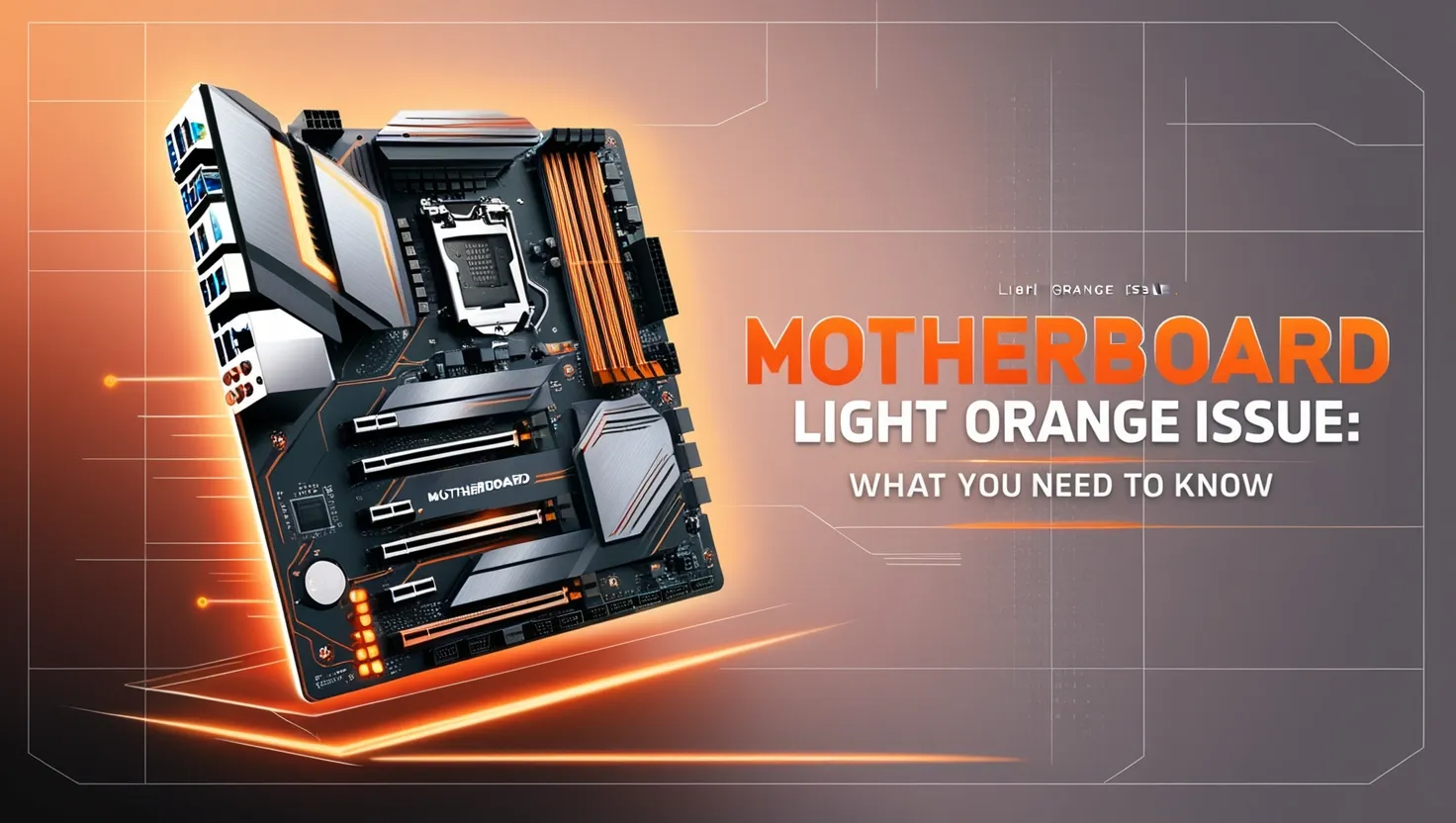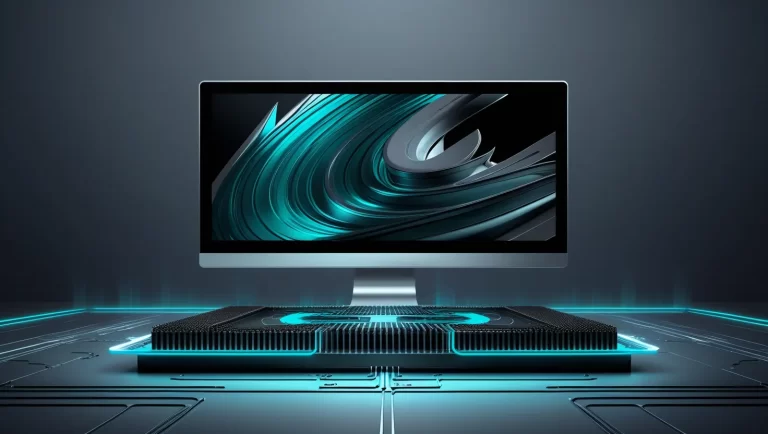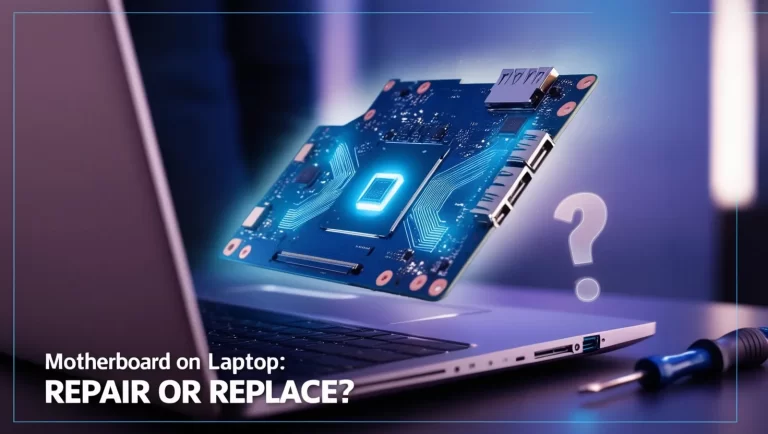
Motherboard Light Orange Issue: What You Need to Know-If you’ve ever encountered an orange light flashing or glowing on your motherboard, you might be wondering what it means and what steps to take. The “Motherboard Light Orange” issue can be a bit concerning for users, especially if the system is not booting up or performing correctly. While an orange light can signal several potential problems, it’s not necessarily a major disaster. In this article, we’ll explore the possible causes of a motherboard light turning orange and offer some solutions to help you fix the issue.
What Does the Motherboard Light Orange Mean?

Motherboards are equipped with LED indicators to help users quickly diagnose problems. These lights can tell you whether the system is functioning normally or if something is wrong. The color and pattern of the LED light can provide specific information about the system’s state.
A motherboard light turning orange is often a sign of a warning or error that needs to be addressed. Depending on the motherboard brand and model, the meaning behind the orange light can vary. However, it typically suggests an issue with power supply, hardware malfunction, or system settings. Understanding what the orange light signals is the first step toward resolving the problem.
Common Causes of Motherboard Light Orange

Several factors can trigger the motherboard light orange, and pinpointing the cause is key to solving the issue. Let’s take a look at some of the most common reasons behind the “Motherboard Light Orange” problem.
1. Insufficient Power Supply
A faulty or insufficient power supply is one of the leading causes of an orange light on the motherboard. If the power supply unit (PSU) is not providing enough power or is malfunctioning, it may cause the motherboard to display an orange light. In some cases, the power supply may be unable to handle the demands of high-performance components like GPUs or additional storage devices, leading to power-related issues.
Make sure the PSU is properly connected to the motherboard and that all cables are securely in place. If the power supply is outdated or damaged, it could be time for a replacement.
2. CMOS Battery Failure
Another common culprit of the motherboard light turning orange is a failing CMOS battery. The CMOS battery is responsible for keeping your system’s settings, such as the date and time, even when the computer is powered off. If the CMOS battery is depleted or failing, the motherboard may struggle to retain system settings, resulting in errors and an orange LED indicator.
Fortunately, replacing the CMOS battery is a simple and inexpensive fix. You can usually find the battery on the motherboard, and swapping it out with a fresh one can resolve the issue in most cases.
3. RAM Issues
Your system’s random access memory (RAM) plays a crucial role in booting up your computer. If there is a problem with the RAM—such as faulty modules, improperly seated RAM sticks, or compatibility issues—your motherboard might display an orange light to alert you to the issue. This can prevent the system from starting up properly or cause crashes and instability.
To resolve this issue, ensure that your RAM is properly seated in the motherboard’s slots. If the problem persists, try testing each RAM module individually to see if one of them is faulty.
4. Overheating and Temperature Problems
Overheating is another possible reason for a motherboard light turning orange. High temperatures can cause instability in your system, and motherboards are equipped with sensors that detect excessive heat. If the CPU or GPU overheats, the motherboard may trigger an orange light to notify you of the problem.
To prevent overheating, ensure that your cooling system is working correctly. Check that your CPU fan, case fans, and heatsinks are functioning properly, and clean any dust buildup that could be obstructing airflow. Adding more fans or upgrading your cooling system may be necessary if you’re running high-performance hardware.
5. BIOS Configuration Issues
The BIOS (Basic Input/Output System) is the firmware that controls your system’s startup process. If there are incorrect or corrupted settings in the BIOS, the motherboard may not be able to boot up properly, leading to an orange light. This can happen after a BIOS update or if certain settings were manually changed and are incompatible with your system.
In such cases, resetting the BIOS to default settings or performing a BIOS update may fix the issue. You can reset the BIOS by using the motherboard’s jumper pins or by removing and reinserting the CMOS battery for a few minutes. (Read More: The Role of Computer Technology in Advancing Artificial Intelligence)
6. Faulty or Damaged Hardware
Lastly, the orange light could indicate a hardware failure, such as a damaged motherboard or malfunctioning CPU. If your motherboard or one of its components is defective, the system may fail to boot, and the motherboard will signal an orange light as a warning.
In this case, you may need to replace the faulty hardware. Inspect the motherboard for visible signs of damage, such as burnt areas or broken components. If you suspect a damaged motherboard, consider consulting a professional technician to diagnose the problem further.
How to Fix the Motherboard Light Orange Issue

Now that we’ve covered the potential causes of the “Motherboard Light Orange” issue, let’s go over the steps you can take to troubleshoot and fix it.
1. Check the Power Supply
The first thing to check when you see an orange motherboard light is the power supply. Ensure that all cables, especially the ones connected to the motherboard, are securely plugged in. Inspect the PSU for any visible damage, and make sure it’s providing enough power for your system.
If you suspect that the PSU is faulty, try testing the system with a known working power supply. If that resolves the issue, it’s time to replace the old PSU.
2. Replace the CMOS Battery
If you think the issue may be related to a dead CMOS battery, replace it with a new one. The CMOS battery is typically a small, round coin cell (usually CR2032) located near the bottom-right corner of the motherboard. Removing the old battery and inserting a new one should resolve any problems related to system settings.
After replacing the battery, check whether the motherboard light returns to its normal color. (Read More: The Evolution of the Processor AMD Ryzen 7: What Makes It a Game-Changer?)
3. Reseat and Test the RAM
If faulty or improperly seated RAM is the issue, power off your system and remove the RAM sticks from their slots. Reinsert the RAM firmly and make sure each module is securely seated. If the issue persists, try testing one stick of RAM at a time to identify any faulty modules.
If you find a faulty RAM stick, replace it with a new one. Also, consider testing different RAM slots to ensure there isn’t a problem with the motherboard’s memory slots.
4. Improve Cooling and Address Overheating
If overheating is causing the motherboard light to turn orange, it’s time to address your system’s cooling setup. Ensure that all fans and heatsinks are functioning properly and that airflow within the case is unobstructed. Clean any dust from the fans and cooling components to prevent overheating.
If your system still runs hot, consider upgrading the cooling system by adding more fans or replacing the stock CPU cooler with a more efficient model.
5. Reset or Update the BIOS
If the issue stems from incorrect BIOS settings, you can reset the BIOS to its default settings. Most motherboards have a jumper that you can use to clear the BIOS settings. Alternatively, you can remove and reinsert the CMOS battery for a few minutes to reset the BIOS.
In some cases, updating the BIOS to the latest version may resolve compatibility issues or bugs that are causing the motherboard light to turn orange.
6. Inspect Hardware for Damage
Finally, if none of the above solutions work, inspect the motherboard and other hardware components for visible signs of damage. Look for burnt areas, damaged capacitors, or other physical problems. If you find damage, it may be necessary to replace the damaged hardware or consult a professional technician for further assistance. (Read More: Exploring the Impact of Computer Technology on Modern Business Strategies)
Final Thoughts
The “Motherboard Light Orange” issue can arise from a variety of causes, ranging from power supply problems to faulty hardware. By systematically troubleshooting each potential cause, you can identify and fix the problem with relative ease. Whether it’s a simple fix like replacing the CMOS battery or a more complex issue involving hardware failure, addressing the problem promptly will help you restore your system to its normal state. Always take the time to follow the troubleshooting steps and consult your motherboard’s manual for specific error codes or LED indicator information.




